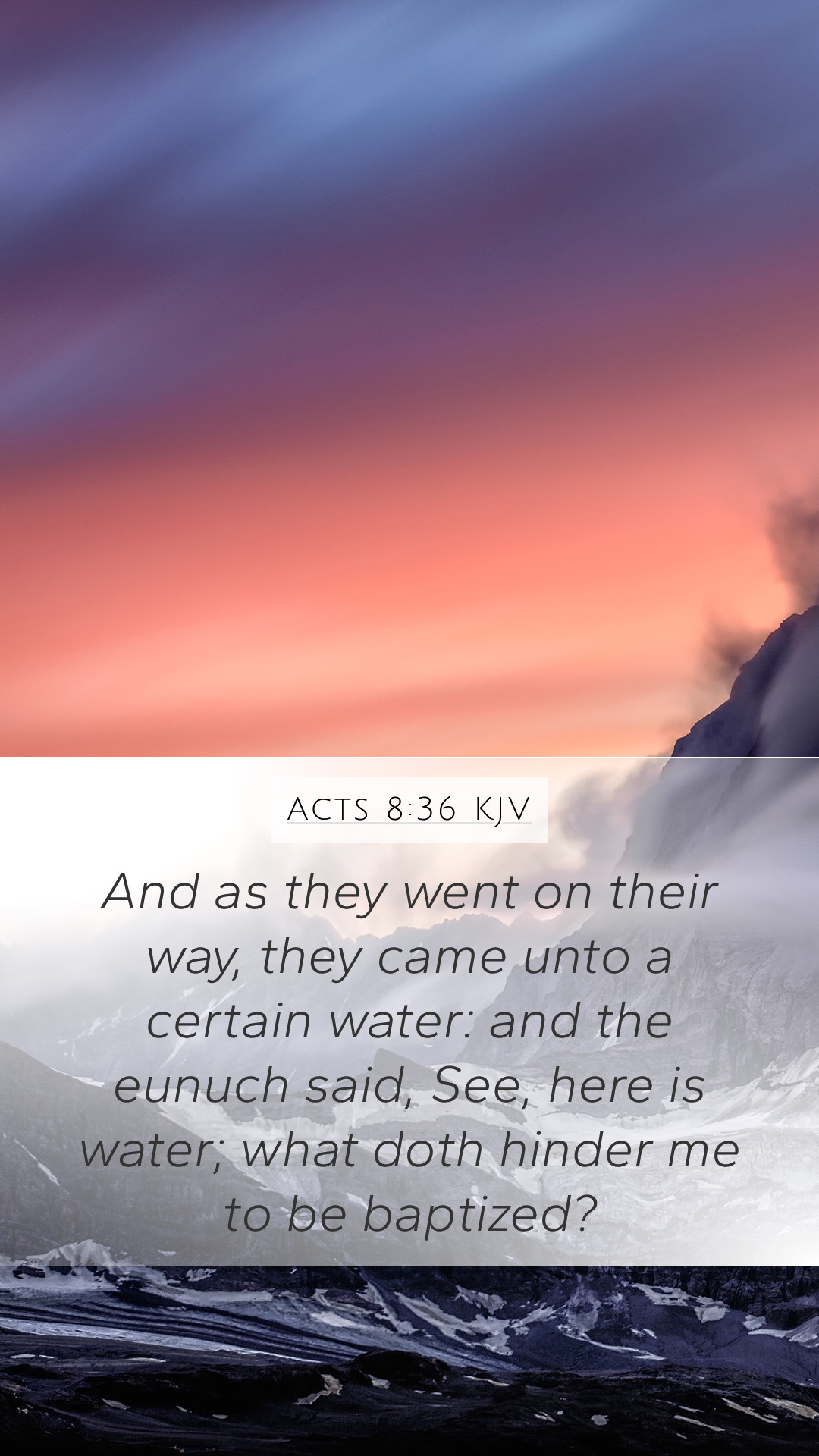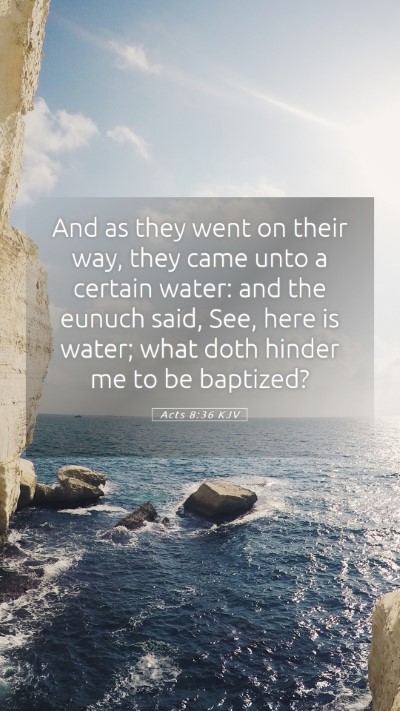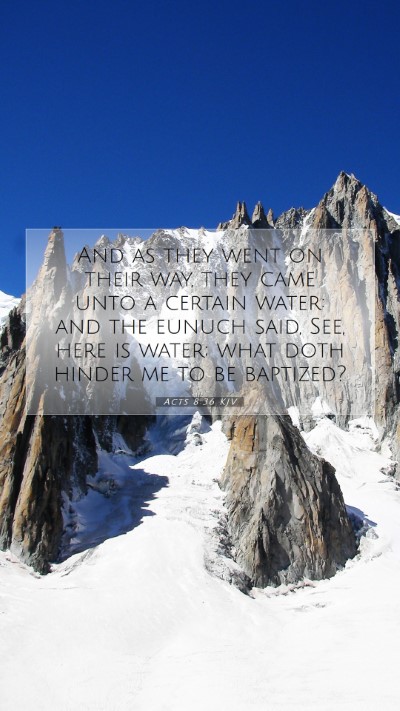Understanding Acts 8:36 - A Comprehensive Commentary
Acts 8:36 states:
"And as they went on their way, they came unto a certain water: and the eunuch said, See, here is water; what doth hinder me to be baptized?"
Overview of Acts 8:36
This verse occurs during the account of Philip and the Ethiopian eunuch, illustrating a pivotal moment of conversion and baptism. It reflects a series of events leading to the eunuch's inquiry about baptism.
Commentary Insights
Insights from public domain commentaries reveal profound meanings derived from Acts 8:36:
Matthew Henry's Commentary
Henry emphasizes the significance of the eunuch's desire for baptism. He points out that the request for baptism signifies a moment of true belief and a willingness to follow Christ. The eunuch’s question reflects not only curiosity but an urgent desire for spiritual transformation.
Albert Barnes' Commentary
Barnes focuses on the implications of water baptism in the early Church. He interprets the water as a symbol of the initiation into the Christian faith, marking a transition from the old life to a new one in Christ. Barnes points out that the eunuch’s readiness for baptism illustrates the essential response of individuals upon recognizing the truths of the Gospel.
Adam Clarke's Commentary
Clarke adds depth by examining the historical significance of the eunuch's status. As a high-ranking official, his acceptance of baptism highlights the inclusive nature of the Christian faith. Clarke suggests that the mention of water indicates a physical necessity for a spiritual act, and he underscores that baptism is an outward sign of inward faith.
Key Themes and Interpretations
This verse illustrates key themes in Bible verse interpretations:
- Desire for Spiritual Growth: The eunuch’s inquiry questions what hinders him from baptism, showcasing a deep desire for connection with God.
- Initiation into Faith: Baptism is essential in Christian doctrine, serving as an outward profession of faith.
- Inclusivity of the Gospel: The desire for baptism from a non-Jewish eunuch highlights the universal appeal of Christianity.
Historical Context
Understanding Scripture often requires knowledge of the historical context. The eunuch was a key official in the court of the Candace, queen of the Ethiopians. His journey from Ethiopia to Jerusalem to worship indicates a pursuit of religious understanding. His encounter with Philip illustrates the mission of sharing the Gospel across diverse cultures and geographies.
Applying Acts 8:36 Today
This verse resonates with modern believers by encouraging a personal reflection on their readiness to embrace faith. Here are practical applications:
- Assess your own readiness for spiritual commitment.
- Engage in discussions within Bible study groups regarding personal faith journeys.
- Utilize online Bible study resources to explore the significance of baptism.
Cross References
Acts 8:36 is related to several other Bible verses that enhance understanding:
- Matthew 28:19 - The Great Commission and the call to baptize.
- Acts 2:38 - The call to repentance and baptism.
- Romans 6:3-4 - The symbolism of baptism representing death and resurrection.
Conclusion
Acts 8:36 not only details the moment of the eunuch's baptism but also encapsulates the essence of what it means to accept faith in Christ. By engaging with Bible verse meanings through comprehensive scripture analysis, believers can deepen their understanding and application of such transformative encounters. This exploration of Acts 8:36 provides valuable Bible study insights and enriches the journey of faith for individuals and groups alike.


